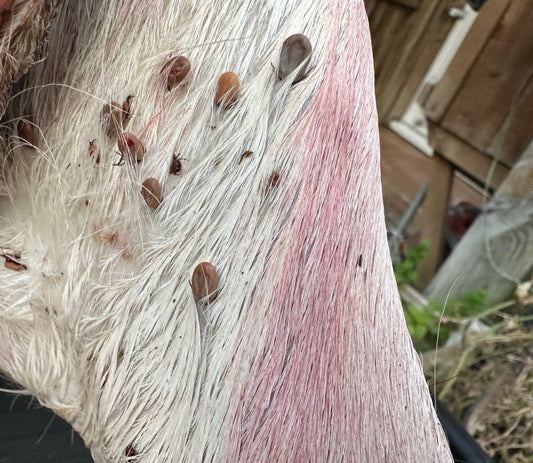The health and management of deer populations on estates across the United Kingdom is a matter of significant concern for land and estate owners. Monitoring and understanding deer health is crucial not only for the preservation of the species, but also for the broader ecosystem health and, by extension, the value and utility of the land they occupy. One aspect of deer health that warrants particular attention is the condition of the pre-scapula lymph nodes.

( healthy left pre-scapula lymph node shown on a juvenile roe)
The pre-scapula lymph nodes, situated anterior to the scapula, play a vital role in the immune system of deer, acting as filters that help to identify and combat infections. Monitoring these lymph nodes can provide valuable insights into the health status of individual deer and populations as a whole.
A study conducted by the University of Edinburgh in 2016, explored the prevalence of Mycobacterium avium subspecies paratuberculosis (MAP) - a chronic infectious disease - in red deer populations in Scotland by examining their pre-scapula lymph nodes amongst other sites. The study found that these lymph nodes were a reliable site for detecting MAP infection, which has implications for disease surveillance and control in wild deer populations.
A comparative study between UK deer populations and those in continental Europe may reveal the prevalence and impact of other infectious diseases. It is known that diseases such as Chronic Wasting Disease (CWD) have not yet been detected in the UK, a status that is crucial to maintain for both ecological and economic reasons. Regular monitoring of pre-scapula lymph nodes could serve as an early warning system for the introduction or spread of such diseases.
For estate owners, understanding the health dynamics through such biological markers could inform better management practices. Healthy deer populations are indicative of a balanced ecosystem, which in turn contributes to the overall appeal and value of the land. Moreover, identifying and addressing health issues early can prevent larger-scale problems, ensuring the sustainable management of both the deer populations and the estates they inhabit.
Investment in regular health monitoring, including the examination of pre-scapula lymph nodes, could be a prudent strategy for estate owners aiming to maintain the ecological balance and long-term value of their estates. With the support of veterinary and ecological experts, estate owners can develop a comprehensive understanding of the health status of deer populations on their land, leading to more informed and effective estate management practices.
References:
- "Detection of Mycobacterium avium subspecies paratuberculosis in wild red deer (Cervus elaphus) in Scotland by comparison of autopsy, culture and histopathological methods," University of Edinburgh, 2016.
- DEFRA (Department for Environment, Food & Rural Affairs), "Chronic Wasting Disease (CWD) Risk Assessment," 2018.
- European Food Safety Authority, "Scientific opinion on chronic wasting disease (II)," EFSA Journal, 2018.




